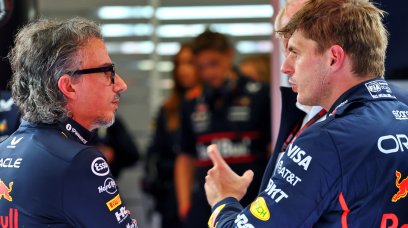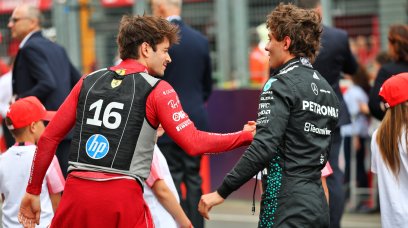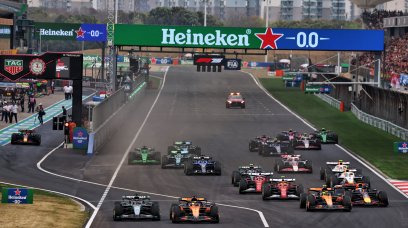McLaren's new MCL35M caught the eye during Bahrain pre-season testing, thanks to an innovative and unique approach to the aerodynamic rules for the rear diffuser. With simplified regulations introduced for this year in order to cut back on rear downforce, the vertical strakes within a diffuser have been shortened by 50mm compared to 2020. However, McLaren made the most of dimensional regulations for the rear floor, and increased the size of the end fences around the gearbox casing. This helps with reducing the impact of the shortened strakes. With the MCL35M proving quick and competitive straight out of the box and, arguably, heading the midfield, McLaren technical director James Key explained that the idea came about from choosing the area of the rear they wished to prioritise. "I think it really depends on what your priorities were with developing these cars," Key told RacingNews365.com . "The thing with these cars that is a bit strange is that everything forward of, let's say, the front of the sidepod, or, for the sake of argument of maybe just after that, is exactly the same regulations as last year. "So there was still a whole ton of development potential in those areas. Which had to be tuned to match new rear conditions that you need to generate, so there's been plenty to do there. "I think, with the time everyone's had, because these regs came quite late last year to let us decide what to do with carrying the 2020 regs over into '21, the priority has been to understand these new floor regulations, and then try to recover as much performance from them as possible. "[It's been] quite a heavy hit actually, and it made the diffuser loss quite heavy. So it's a case of using all the tools at your disposal to try and do that. "There's been complex ideas elsewhere, on other cars. Everyone's treated it in a slightly different way." While the technical regulations mean that there's little room for truly game-changing innovation, Key explained that different teams will have encountered different losses based on their 2020 designs. "It could be that these regs affected people in different ways as well, to a certain extent, with the structure you send in the undercut, where your Y250 is and all this sort of stuff, and the nature of your brake ducts, and so on. "It could be that there was just a slightly different influence, which needed bigger priorities placed elsewhere. For us, it was just that there was a box there where you could do something with the diffuser. It was researched and it works." The changes for 2021 mean the hit, in terms of aero loss, has been mooted to be around 50 points of downforce. This represents a significant loss that most teams say they have roughly recovered through aero developments within the new regulations.
Will other teams follow suit?
Key also expressed some surprise that other teams didn't follow suit in exploiting the loophole, but admitted that the concept won't take a particularly long time to emulate. "It's really understanding how it works with your car, that's the key to this," Key said. "You can then end up with a unique geometry of your own because you might understand the principle, but then you have to adapt it accordingly that it works with your car. "So you'd probably therefore wind tunnel test it, which might be a week or two down the line and then you've got to manufacture it. So you could say between, I suppose, three and five weeks between taking the picture and putting it on the car if you really wanted to push this through".
What are 'downforce points'
Asked to explain and quantify exactly what 50 points of downforce is, Key explained that it can be best represented in terms of laptime. "It's a non-dimensional unit, so the way to describe it is in terms of laptime, ie. 'this many points represents this laptime'," he added. "You tend to find the ratio of lift to drag impact changes in quite non-linear ways as you climb up the downforce scale. "So it becomes more and more difficult to find downforce and it becomes more efficient if you find efficiencies, so it does change over time. "So you'd have to explain a point in terms of laptime. You take a co-efficient, which is based at a half rho v squared, which is the dynamic pressure. That multiplied by a number gives you a downforce figure. And a point is just a fraction of that."
Most read






